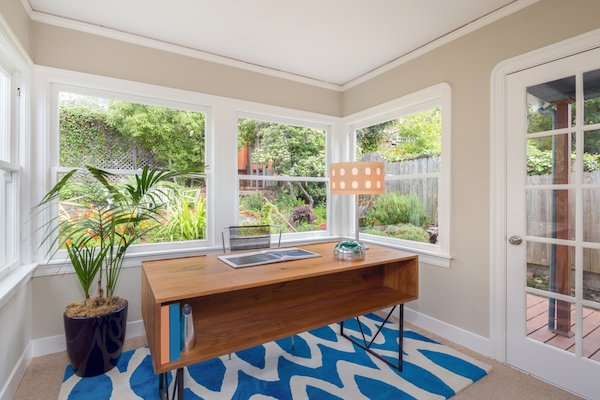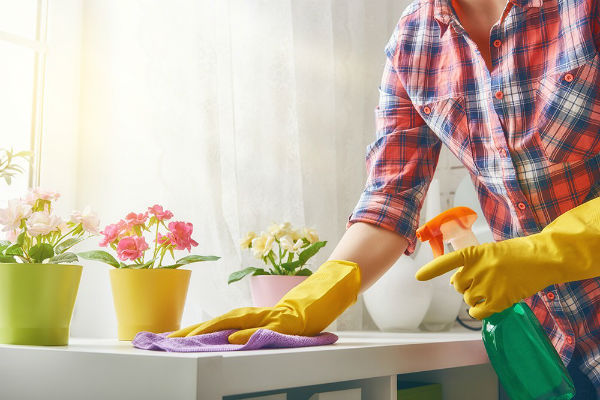
Clean indoor air is integral to having comfortable and liable conditions inside your home or office. Developing and implementing measures such as indoor air quality monitoring that enhance indoor air quality can significantly improve your health conditions and overall quality of life.
Here are eight tips to ensure that you enjoy quality indoor air.
1. Cut Down On Pollutants.
Learning about sources of pollution from outside or within your home or office can help you know what to avoid when trying to keep your indoor air clean. Some common sources include:
Radon is a radioactive gas that forms in the earth and can seep up through cracks to find its way into your building. Inhaling radon can lead to severe health issues such as lung cancer.
You can use a home test kit to check radon levels and ensure it is safe. A high reading of radon levels in your indoor air requires you to consider repairing your home’s foundation to prevent further leaks and evacuate the place for a few days until the radon levels drop. Also, consider learning more about this radioactive natural gas and how to handle it safely.
Studies show that inhaling secondhand smoke can lead to certain types of cancer and other health complications. But smoke, in general, causes significant damage. Thirdhand smoke is often on surfaces like clothes and furniture and is also a health risk.
You can avoid secondhand and thirdhand smoke from our indoor spaces by ensuring there is no smoking indoors. Consider minimizing or quitting the habit if you are a smoker. The smoke you exhale affects your indoor air quality, surroundings, and the people around you.
Formaldehyde, a VOC (volatile organic compound), is a harmful gas generated by some household items. For instance, it is an active ingredient in glues used on furniture.
Formaldehyde can find it was inside your home and affect the indoor air quality. High exposure to this volatile organic compound can cause bronchitis and other respiratory problems. You can avoid or manage the situation when you discover formaldehyde in your home using the following strategies:
-
- Buying used furniture instead of new because the former has released formaldehyde over time.
- Opting for furniture made from solid wood instead of composite wood.
- Storing household items with formaldehyde in a safe and sealed space.

Some cleaning products can release harmful chemicals that linger in the air. We have picked the following as top contenders:
-
- Bleach
- Air fresheners
- Cleaning sprays
- Glass cleaners
You can reduce the risk of pollution from cleaning products by ensuring that you pick those without excess pollutants and are made adhering to safety standards.
2. Test Your Air Quality.
Testing the indoor air quality is an excellent starting point if you have concerns about the air quality in your house and are unsure of the changes that can help.
The first option is to let a professional handle the job, and the second is to opt for the DIY route if you know what to do. However, the methods to use depend on what you have at your disposal. The DIY way is less costly but hiring a prof is more likely to give the best results.
You must use home test kits which you can purchase online or from the local store. It is best to invest in kits that check for different pollutants instead of one. However, most home-test kits might not be as efficient as expected.
Therefore, they are an ideal option if you have concerns about one or two air pollutants in your home. Work with an experienced technician if you want extensive results and lasting solutions.
You could spend upwards of $200 on a comprehensive home test kit for checking more than two pollutants.
- Professional Air Quality Testing
Opting for professional services will cost more than doing the air quality test yourself. But you also get additional services that help manage pollutant sources discovered during the testing. Many of these service providers also offer specialized solutions like mold removal and prevention.
3. Take Steps To Control Allergens.
Dust, mold, pet dander, and tiny creatures like mites are common allergens and irritants found in most indoor spaces. Keeping them at bay significantly changes your home’s air quality while reducing the risk of health complications like sneezing, itching, running nose, sore throat, skin rashes, and watery eyes.
Properly managing these allergens and irritants in your home will entail hygienic upkeep and prudent prevention.
The preventive measures can include:
- Washing beddings and couch cover in hot water twice a month to kill dust mites.
- Bathing and grooming your furry pet regularly.
- Use impermeable mattresses and hypoallergenic pillows that do not attract dust mites.
The cleanliness and hygienic upkeep measures include:
- Dusting and vacuuming dust, mites, and pet dander to prevent accumulation.
- Removing and replacing drywall, wood, and carpets infested with mold.
- Use bleach and soap to wash and scrub mold off nonpermeable surfaces like metal and tile.
4. Use An Air Purifier.
An air purifier can help make things easier when trying to maintain clean indoor air. You will get the best results when you go for a purifier with a HEPA (High-Efficiency Particulate Absorbing) filter, which can remove nearly 99% of harmful particulates in your indoor air.
Please note that air purifiers will not remove all the particles or pollutants, but they will do an excellent job when it comes to:
- mold spores
- smoke
- volatile organic compounds (VOCs)
- pet dander
- dust
- viruses
Click here if you are searching for effective air filters or what to know more about HEPA air purifiers.
5. Improve Ventilation.
Free-flowing air is less likely to have a high concentration of pollutants and allergens; hence, keeping the air moving can aid in improving the indoor air quality. It is a strategy worth considering if you reside in areas with clean outdoor air low in pollen. You can open the doors and windows to let in the air, facilitating air circulation in your home.
People assume that the vents and other open weak spots are enough to allow air to enter their houses. However, these tiny spaces are not enough, especially when they also are not frequently assessed and cleaned, meaning they can contribute to the air quality problem you face instead of providing the desired solution.
Some measures you can take towards actualizing these changes include:
- Inspect your HVAC system regularly to clean and repair any issues.
- Access the vents and ductwork to ensure they are unobstructed and clean because dust can build up over time.
- Periodically check, clean, or replace the air filters in your AC.
6. Reduce Dampness.
High moisture or humidity can cause indoor spaces to be damp, creating ideal conditions for mold to grow. It also can cause volatile organic compounds to leak into the indoor air. Dampness in your home can be due to factors like pooling water, humid climates, low ventilation in stream areas like the kitchen and bathroom, leaking roofs, and burst pipes.
Damp conditions pose a high risk of your family dealing with asthma, coughing, wheezing, and other respiratory complications. But you can mitigate this problem by taking the following measures:
- Using a dehumidifier
- Opening windows and running the fan when using steamy rooms like the kitchen and bathroom.
- Eliminating pooling water
7. Check On Your Heating Systems.
The heating system in your home can affect the indoor air quality, especially if you are using a wood-burning stove or fireplace. You are at risk of developing long-term health problems like lung cancer and could also face higher risks if you are using dated gas-fueled heating appliances and older furnaces.
The gas-fueled heating systems can release carbon monoxide that can lead to suffocation and death since it is an odorless gas. It is best to upgrade to a direct vent gas-powered appliance.
Electric heating options are a cleaner and safer heating solution, and you can keep the cost low if you invest in a solar-powered heating system.
8. Introduce Indoor Plants.
Plants are a natural air purification system according to The Tree Center. They take in carbon dioxide and expel oxygen. Hence, adding a few plants inside your house can help cleanse the air. However, some studies show no conclusive evidence of plants being an effective solution.
While research shows house plants can lower the number of indoor air pollutants like VOCs, CO2, and fine particulates, the impact level they have is inconclusive because the findings of different studies show substantial variances.
A 2019 study suggests that ventilation systems in many homes are more effective at dealing with VOCs than indoor plants. And other suggests that plants might exasperate the problem instead of bringing a solution if they trigger allergies or are a source of mold.
Some experts recommend taking the time to know which plants are most effective at improving indoor air quality. Top choices include the peace lily (Spathiphyllum), Ivy, Dracaena, and Hedera helix.
via https://www.AiUpNow.com
July 31, 2022 at 10:29PM by admin, Khareem Sudlow
